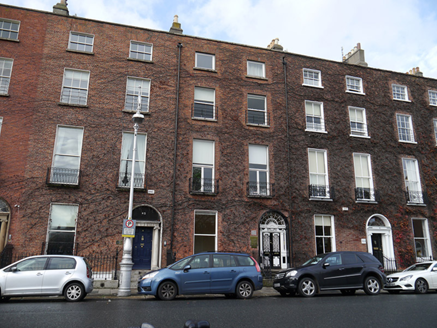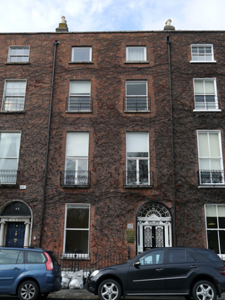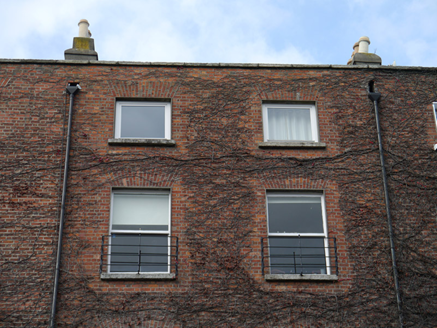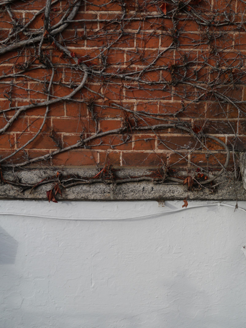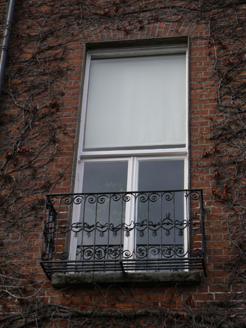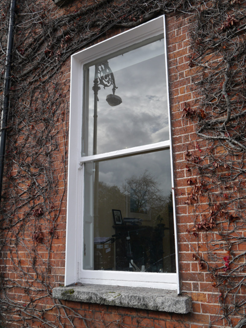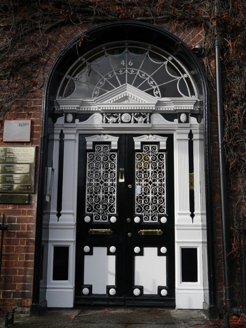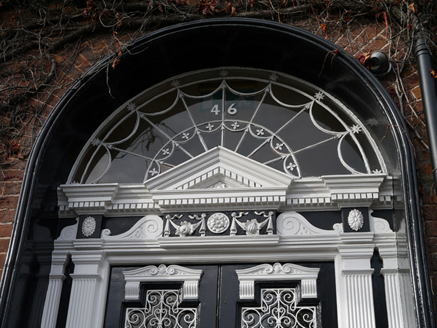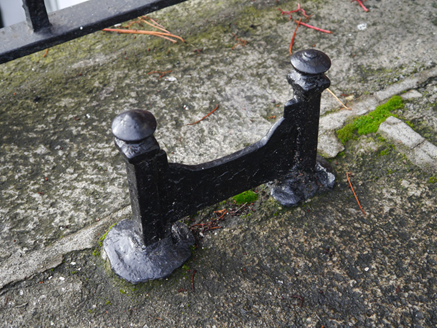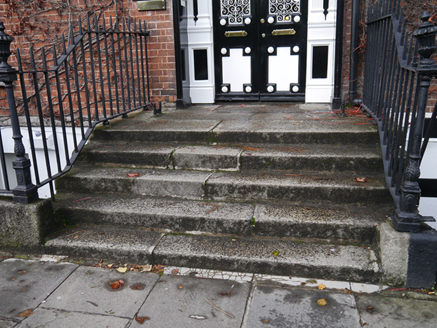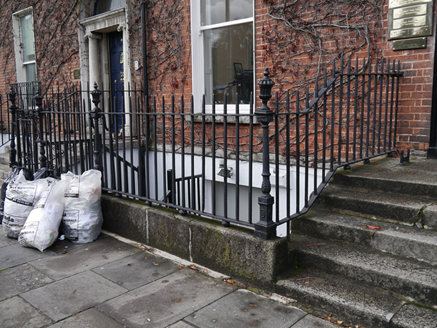Survey Data
Reg No
50930269
Rating
Regional
Categories of Special Interest
Architectural, Artistic, Historical
Original Use
House
In Use As
Office
Date
1805 - 1815
Coordinates
316413, 233142
Date Recorded
11/11/2015
Date Updated
--/--/--
Description
Terraced two-bay four-storey over basement former townhouse, built c. 1810, with two-stage return to rear (west). Now in use as offices and apartment. Pitched roof to east with pyramidal roof to rear (west), concealed by brick parapet with granite coping. Shouldered rendered chimneystacks to party walls with lipped yellow clay pots. Parapet gutters with uPVC downpipes to outer ends. Red brick walling laid in Flemish bond (largely concealed behind vegetation growth) over rendered walling to basement beneath granite plinth course. Square-headed window openings with brick voussoirs, patent reveals and masonry sills. Largely replacement one-over-one sliding timber sash windows with ogee horns, lower pane of first floor windows modified to contain bipartite timber casements, two-over-two sash to basement and uPVC casements to third floor. Wrought-iron guard rails to second floor window openings and decorative iron balconettes to first floor. Round-headed door opening with brick voussoirs, moulded rendered reveals and ornate recessed surround (c. 1904) containing engaged fluted pilasters with respond quarter-pilasters over shared panelled pedestals, carrying ornamented frieze and dentilled cornice featuring pediment to centre over swaged-motifs to frieze; cobwebbed fanlight with double-leaf timber doors having cruciform-panels, glazed to upper section behind decorative iron grilles, surmounted by swan-necked pediments on scrolled brackets. Granite entrance platform with cast-iron boot scrapers, approached by five granite steps flanked by iron railings with decorative cast-iron corner posts over granite plinth, enclosing basement to south-side. Coal-hole cover to pavement. Street fronted on Fitzwilliam Square West. Two-storey flat-roofed mews building to west on Laverty Court with integral square-headed carriage-arches.
Appraisal
No. 46 was the home of the Home Rule supporter Sir Andrew Beattie (1860-1923) and features an unusual doorcase installed for a visit by King Edward VII in 1907. Despite the loss of original fabric, the ornate early twentieth-century doorcase adds great interest to an otherwise austere façade. Nos 45-48 were built by William Dixon, a timber merchant,(50930267-50930270) (Bryan, 2006). The house forms part of a relatively intact imposing early nineteenth-century streetscape. Laid out in 1791 by the surveyors J & P Roe, Fitzwilliam Square was the last of the city's Georgian squares to be completed. Development was staggered, progressing slowly owing to the French wars, but almost all of the western side was completed between c. 1807-15. Although largely homogenous in character and form, the subtle variations between terraces are indicative of the speculative nature of the square's development.
